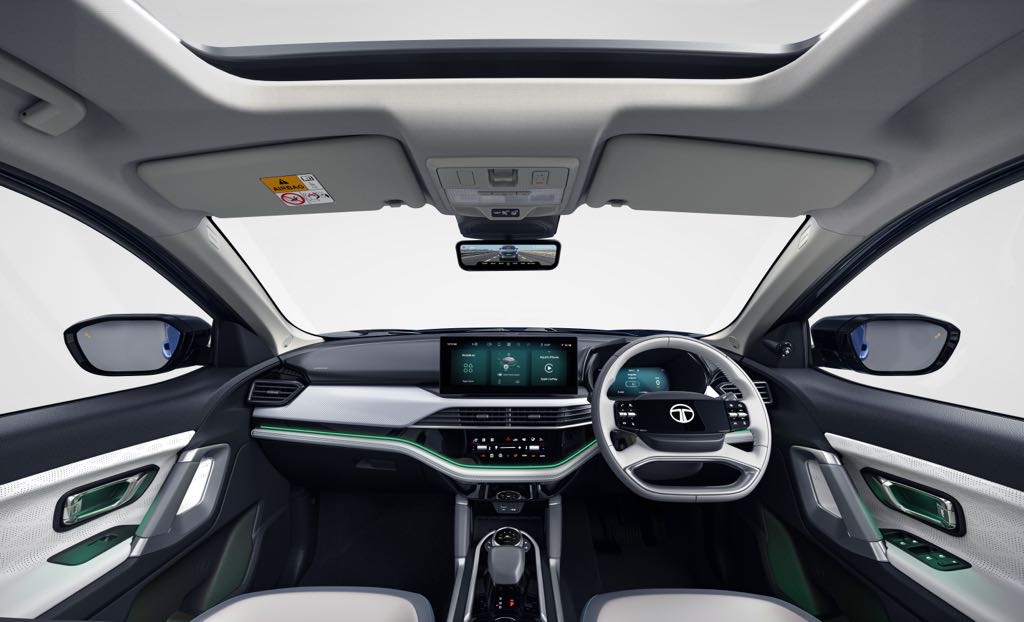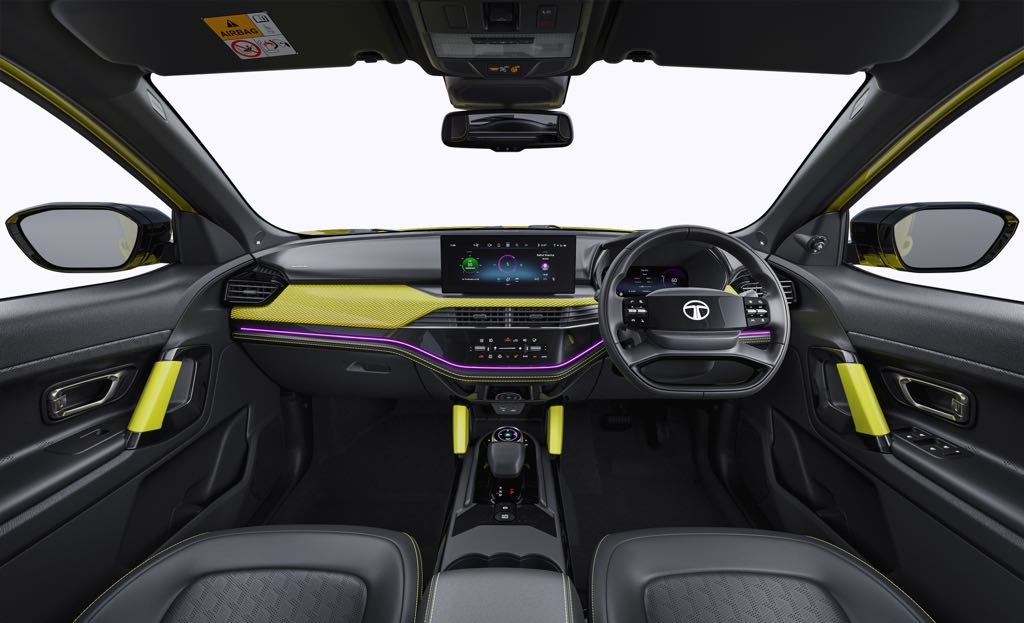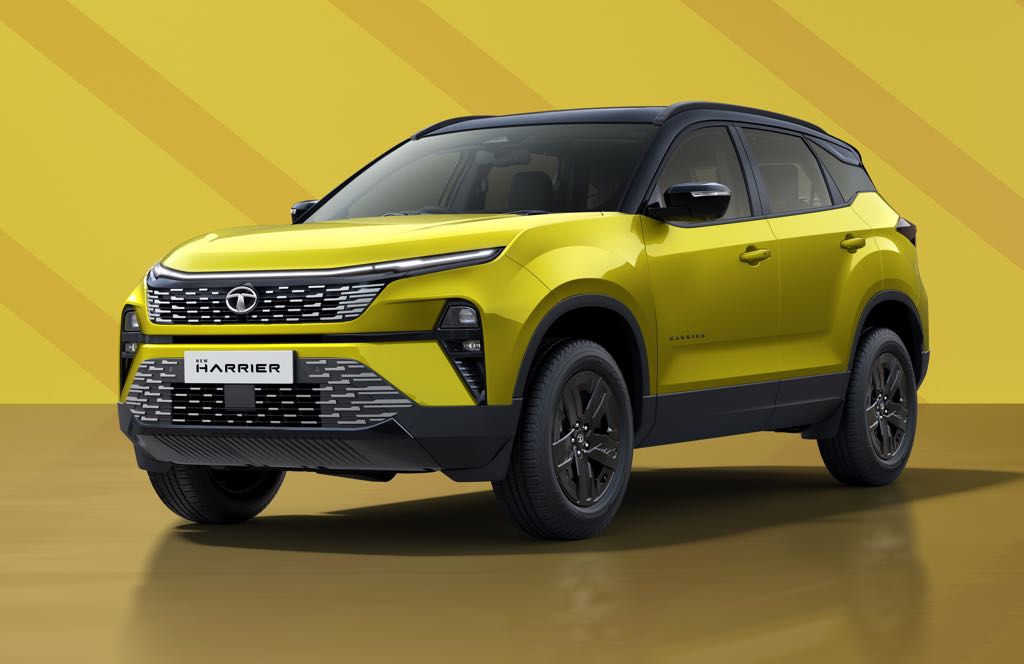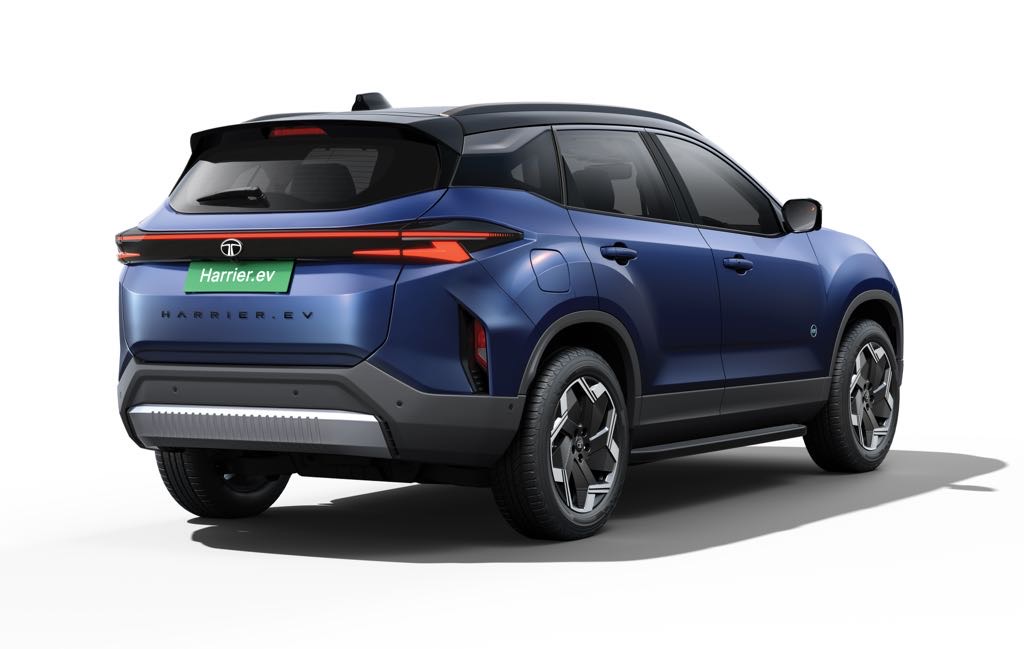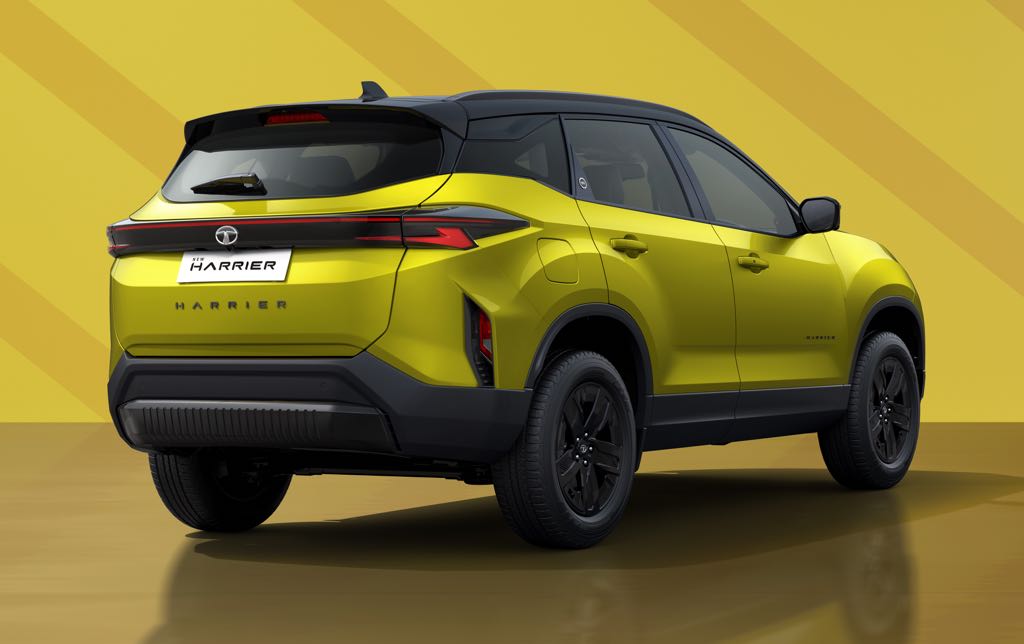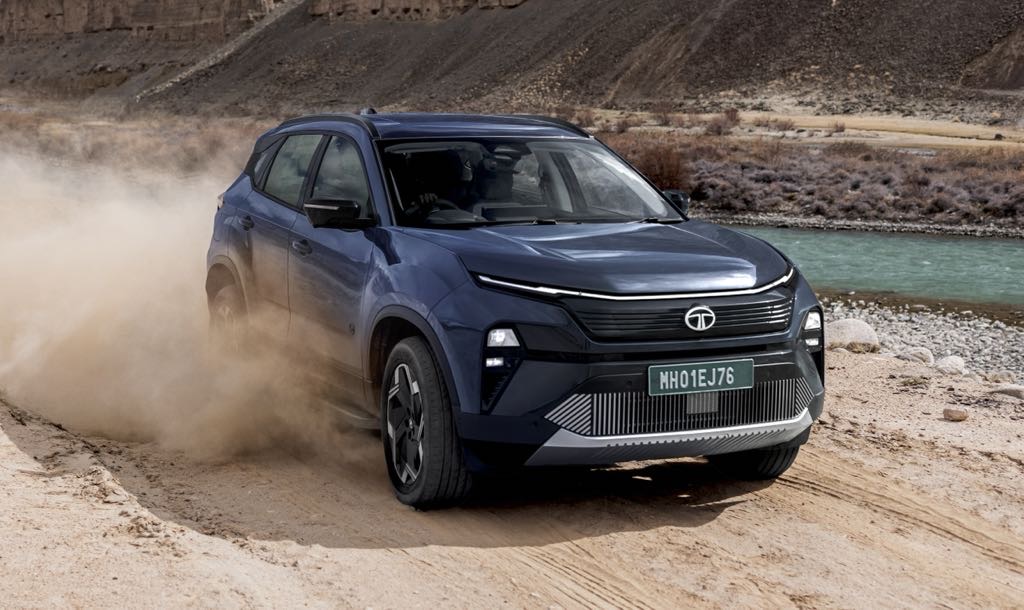
Tata Harrier EV & Harrier ICE Compared, Harrier EV Features AWD & More Convenient Features
Tata Harrier EV and Tata Harrier ICE are two cars that have stark differences between them, even if they are just variants of the same model. This divide comes because one is an ICE and the other is an EV. Let’s understand which would be the best choice for you.
Styling Comparison
A few EV-specific design cues include 19-inch aero-optimised alloy rims, closed grilles, a revised front bumper and ‘Harrier.EV’ badging that characterises the SUV. The Harrier EV extends by 2 mm in length and increases in height by 22 mm.
The Harrier ICE has the same 2741 mm wheelbase as its EV counterpart. However, the Harrier ICE resembles a traditional vehicle, with open grilles designed to feed air into the engine. It is important to note that it is offered with a brighter colour palette, with colours like Sunlit Yellow and Coral Red.
It is important to note that the Harrier EV is offered with darker colours, i.e. Empowered Oxide, Nainital Nocturne, Pristine White and Pure Grey and a Stealth Edition. The Harrier ICE offers a wider range of colours to choose from, i.e. Sunlit Yellow, Coral Red, Pebble Grey, Lunar White, Oberon Black, Seaweed Green, Ash Grey and Matte Stealth Black.
Interior Comparison
The Harrier EV brings a 14.53-inch Samsung Neo QLED infotainment system into the interior. Beyond this, the Harrier EV and Harrier ICE share the same digital instrument cluster, illuminated Tata logo on the steering wheel and touch-sensitive HVAC controls. Additionally, the Harrier EV is equipped with a Boss Mode, which folds and moves the front passenger seat forward.
Features Comparison
In terms of features, the Harrier EV is equipped with V2L (Vehicle-To-Load) and V2V (Vehicle-To-Vehicle) charging functionality. The Harrier ICE and Harrier EV share features like Dolby Atmos 5.1, ventilated and power-adjustable front seats and ambient lighting.
Interestingly, the Harrier EV’s boot space is 502 litres, whereas the Harrier ICE’s boot space is 445 litres. Notably, the Harrier EV’s boot space is measured up to the roof, while the Harrier ICE’s boot space is measured up to the parcel shelf. Additional features in the Harrier EV include a dashcam built into the fully digital IRVM.
The Harrier EV is built on the brand’s new electrical architecture known as Tata Intelligent Digital Architecture Layer (TiDAL). This enables over-the-air updates, Level 2 ADAS, surround view and much more. The Harrier EV also gets Auto Park and Summon Mode, which help the SUV to get out of tight parking spaces automatically.
The Harrier EV also brings DrivePay, a UPI-based car payment system that eliminates the use of the phone for payment of FASTag, EV charging points, etc. The SUV is equipped with Off-Road Assist to facilitate off-road driving, featuring low-speed (as low as 5 km/hr) cruise control for navigating treacherous terrains.
Powertrain Comparison
Tata bases the Harrier EV on the brand’s EV platform, Acti.ev. The Harrier EV offers two LFP battery options: 65 kWh and 75 kWh. The smaller battery pack produces 238 HP, whereas the bigger battery produces 398 HP and 504 NM of torque. The vehicle features four levels of regenerative braking and even includes a drift mode for sideways movement.
The 75 kWh Harrier EV brings AWD that was last offered on the Tata Safari Storme. There is also a multi-link suspension, frequency-dependent dampers and 6 terrain modes, i.e. Normal, Snow/Grass, Mud-Ruts, Sand, Rock Crawl and Custom.
The Tata Harrier ICE is exclusively powered by the 2.0-litre Kryotec diesel 4-cylinder engine that produces 170 HP and 350 Nm of torque. It is paired to either a 6-speed manual or a 6-speed torque converter automatic transmission.
Performance Details
The Harrier ICE does a 0-100 km/hr acceleration in 11-12 seconds. The Harrier EV does the 0-100 km/hr in 6.3 seconds with the help of Boost Mode. The Harrier EV’s RWD version and Harrier ICE share the same drive modes, i.e. Eco, City and Sport.
Battery Range & Charging Information
The Harrier EV AWD 75 kWh has a MIDC-certified range of 622 km, whereas the 75 kWh RWD version has a range of 627 km. You can charge using a 7.2 kWh AC charger, which requires 10.7 hours for a full charge. Additionally, there is also a 120 kW DC fast charger that charges from 20-80% in just 25 minutes.
Variants Comparison
In terms of variants, the Harrier ICE has more options, offering 16 variants. It is priced from Rs. 15 lakhs (ex-showroom) and goes up to Rs. 26.5 lakhs (ex-showroom). Tata has disclosed only the introductory prices for the Harrier EV’s entry-level Adventure trim, pricing it at Rs. 21.49 lakhs (ex-showroom). The top-spec Empowered trim is expected to surpass the top-spec Harrier ICE version.
Outlook
It can be ascertained that the Harrier ICE offers a better platform for personalising the vehicle. The Harrier EV is a better vehicle for off-road enthusiasts and offers more features, making it a better daily driver.
